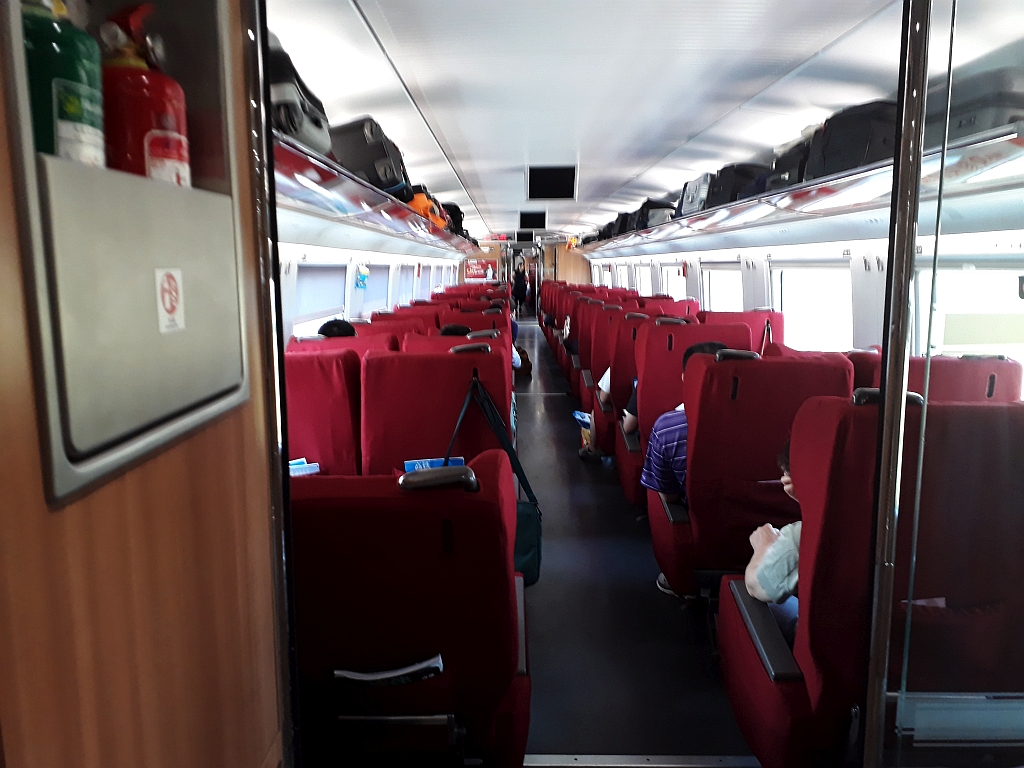
The Velaro CN is the epitome of interior spaciousness. Thanks to its extra-wide car body, the train offer seats for 601 passengers and plenty of comfort. Located at both ends of the train immediately behind the driver's cab is a 1st class lounge. One particular highlight is the transparent pane of glass between the lounge and the driver's cab, which gives the passengers an unobstructed view of the track. What's more, the lounge is fitted with swivel seats, so that the passengers can always sit facing forward. The middle section of the train accommodates a further 1st class car, in which the wheelchair-users' position and the toilet for general use is located. Immediately next to the 1st class car is the bistro car where passengers can enjoy snacks and beverages. This car also contains a customer service office. All remaining cars are 2nd class cars.
The passenger information system is based on a wide range of experience and incorporates the latest technologies. In the 1st class car, large video screens that are clearly visible from every seat provide exciting entertainment. Compatibility with advanced media and formats - such as DVD and MP3 - makes sure that passengers have access to the latest productions in top quality. Five different stereo audio programs can be received at every seat in the 1st class car. Passengers receive information via interior and exterior LED displays. Owing to the expected international audience, the information can be provided in English and Chinese.
The proven SF 500 bogies - which are rated for running speeds of up to 350 kmph - contribute to the exemplary lateral guidance of the train, maximizing stability for excellent running comfort. Even more important than rapid acceleration is rapid deceleration. The Velaro CN is equipped with a brake management system that controls automatic switchover between the electric and pneumatic brakes. Braking is predominantly performed in electric mode during routine service. Only when the line system is no longer able to absorb the electric braking energy of the traction motors does the brake management system gradually switch over to the pneumatic brake. This principle saves energy and also reduces mechanical wear.
Photographed by Asit Baran Das & Bani Das.


